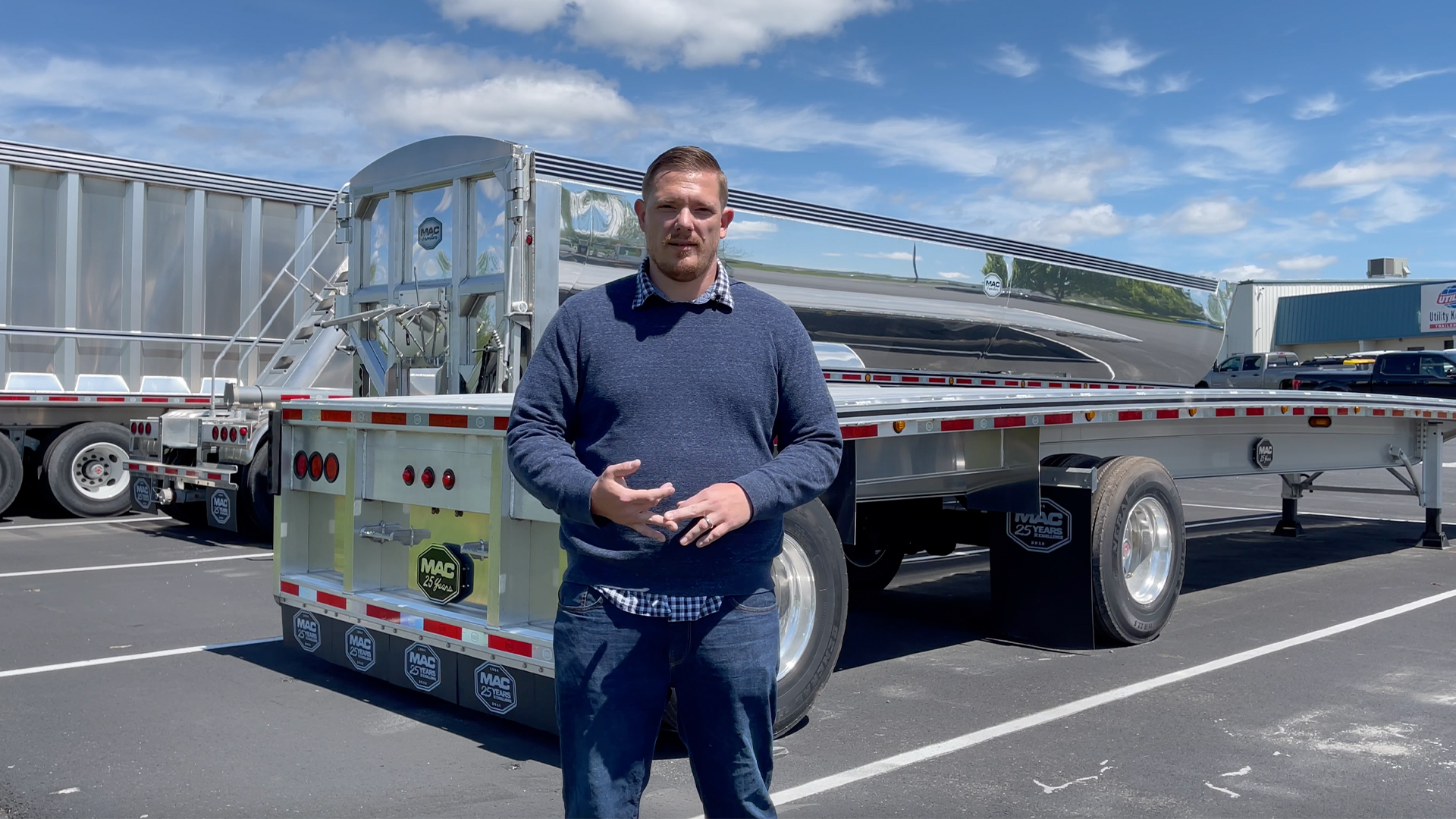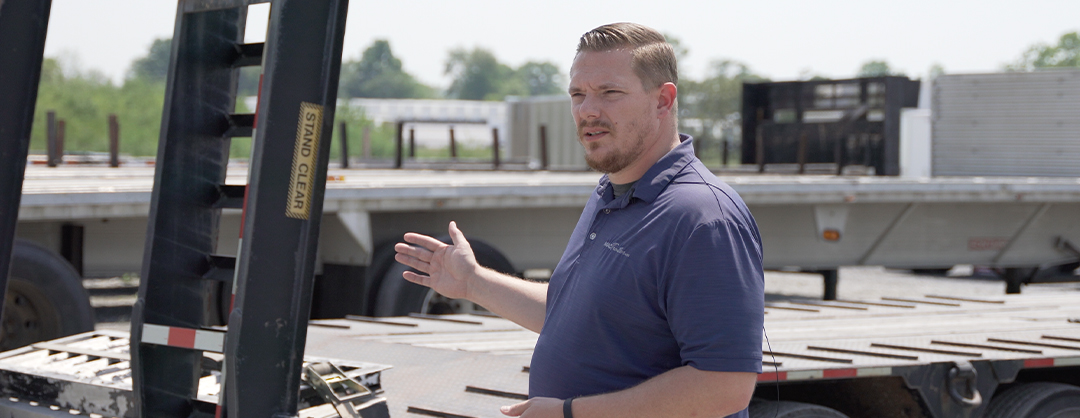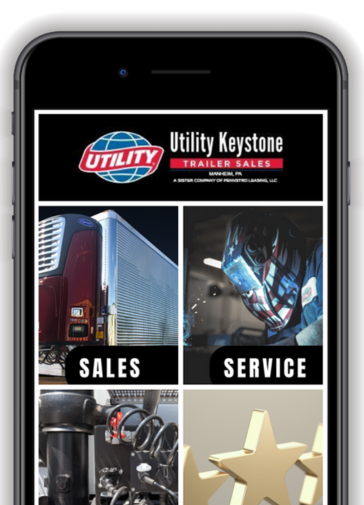Welcome back to our series How to Buy the Best Flatbed Trailer
Today we’re talking about the 5 ways of how to prevent semi-trailer flatbed damage while Loading
Flatbeds are prone to damage, whether top, rear, or side-loaded; here are some pointers to help prevent damage while loading your flatbed semi-trailer.
Preventing Damage to Your Flatbed Side Rails
Most of the time, you’re loading from the side with a forklift, which can cause damage to the side rail, sometimes called rub rails.

Consider the following upgrades on the front end for a more durable side rail.
- Upgrade to ½” Side Rails
We recommend upgrading your side rails to as much as 1/2″ to help prevent damage. - Double Up on Pipe Spools
Doubling pipe spools provides additional support and increases your options for load securement.
How to Prevent Damage from Rear Loading
What if you’re rear-loading? Most flatbeds are not properly set up to back up to a dock with a forklift loading from the rear.
- Add a Cross Member to the Rear of the Trailer
Adding a cross member can help prevent forklift damage to the end of the trailer. We typically recommend this on any flatbed for additional support. - Add a Rear Tread Plate
Help prevent damage from a dock plate coming down by adding a tread plate to the rear. It adds extra support and will help prevent damage over the long run.
Prevent Screws From Popping and Waves in the Floor.
Consider your cross member spacing and composition to help prevent those popping crews and waves in your floor.
- Aluminum Crossmember Spacing
If you are rear loading or have concentrated loads, we recommend decreasing your cross members to a maximum spacing of 12″ because aluminum cross members have more deflection than steel. - Steel Crossmember Spacing
Steel cross members are stronger, so you can get away with spacing your cross members at 16″; however, you might still want to consider 12″ spacing.
Know What Your Trailer is Capable of Hauling
Most importantly, you need to understand how your trailer is spec’d and the load it’s equipped to handle.
A trailer with 24″ cross member spacing, and no side cross braces, should not be rear-loaded; also, be mindful of the load toward the outside of the rail because the trailer is not set up to support the weight.
Utility Keystone works hard at finding the best solution to meet the demands of your hauling requirements.
Read more in this series, How to Buy the Best Flatbed Trailer.
- How to Buy the Best Flatbed Trailer
- 3 Types of Semi-Trailer Flatbeds
- Conestoga vs. Curtainside Trailer
- 7 Ways to Maximize Payload on a Flatbed
- Beam Ratings on a Flatbed Semi-Trailer
- 5 Ways to Prevent Damage to Your Flatbed
- Load Securement Options for Flatbed Semi-Trailers
- Hauling Equipment on Step Decks and Flatbeds
- Bulkheads and Accessories for Flatbeds
Read Articles on How to Buy the Best Dry Beds
Conestoga vs Curtainside Semi-Trailer
Curtain Side and a Conestoga Trailers are great options to keep your cargo protected from harsh elements, and both are an easier, safer way of tarping your load
Everything There is to Know Before Buying Your Next Flatbed Trailer
Everything You Need to Know Before You Buy Your Next Reefer Trailer. We’ll take a deep dive into how you can buy the best reefer trailer spec’d with your particular requirements and needs in mind.
How to Haul Equipment on Step Decks and Semi-Trailer Flatbeds
Hauling Equipment on Step Decks and Flatbed Trailers. Beaver tail, ramps, and Moffett kits.








